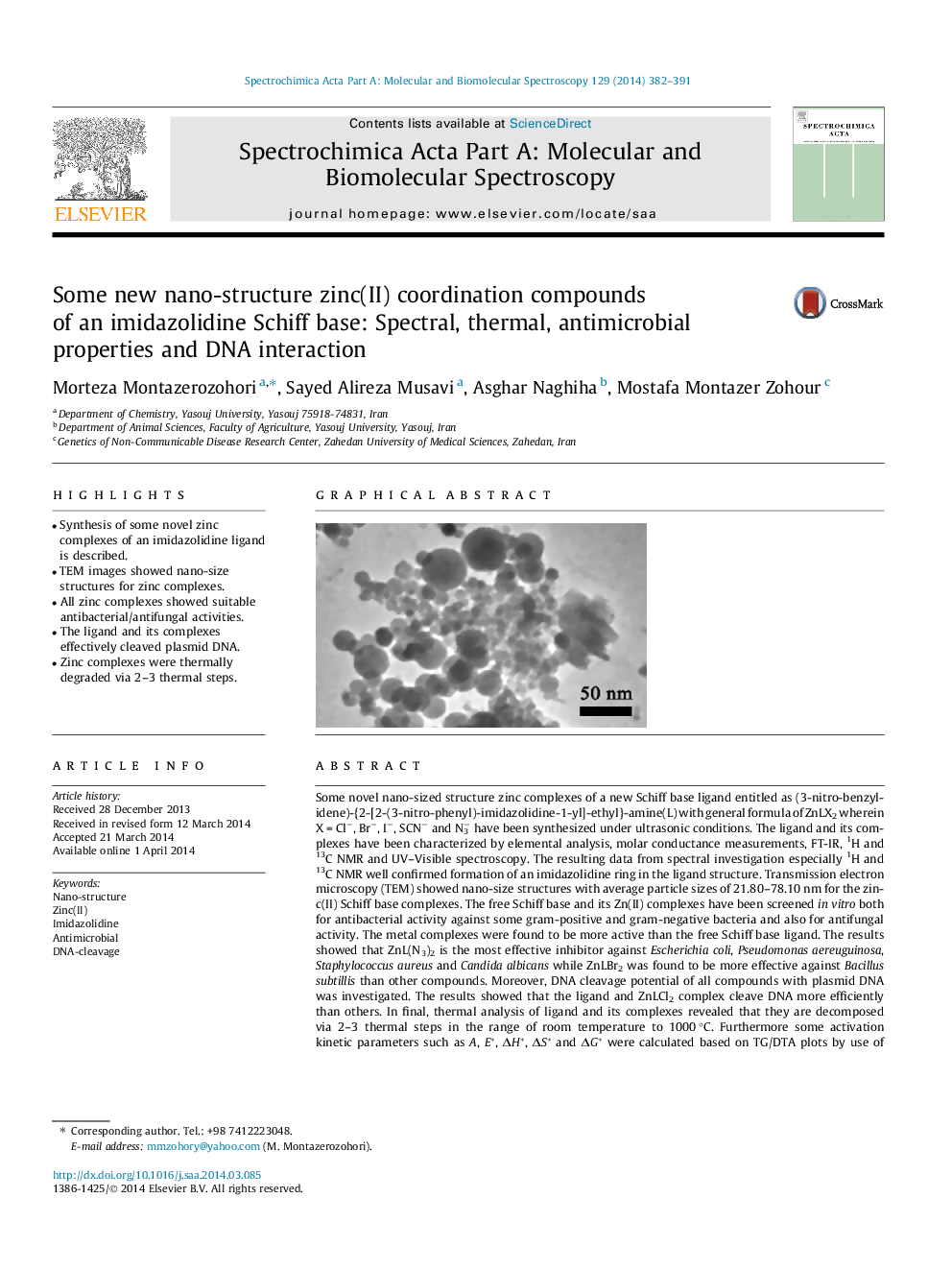| Article ID | Journal | Published Year | Pages | File Type |
|---|---|---|---|---|
| 1229887 | Spectrochimica Acta Part A: Molecular and Biomolecular Spectroscopy | 2014 | 10 Pages |
•Synthesis of some novel zinc complexes of an imidazolidine ligand is described.•TEM images showed nano-size structures for zinc complexes.•All zinc complexes showed suitable antibacterial/antifungal activities.•The ligand and its complexes effectively cleaved plasmid DNA.•Zinc complexes were thermally degraded via 2–3 thermal steps.
Some novel nano-sized structure zinc complexes of a new Schiff base ligand entitled as (3-nitro-benzylidene)-{2-[2-(3-nitro-phenyl)-imidazolidine-1-yl]-ethyl}-amine(L) with general formula of ZnLX2 wherein X = Cl−, Br−, I−, SCN− and N3− have been synthesized under ultrasonic conditions. The ligand and its complexes have been characterized by elemental analysis, molar conductance measurements, FT-IR, 1H and 13C NMR and UV–Visible spectroscopy. The resulting data from spectral investigation especially 1H and 13C NMR well confirmed formation of an imidazolidine ring in the ligand structure. Transmission electron microscopy (TEM) showed nano-size structures with average particle sizes of 21.80–78.10 nm for the zinc(II) Schiff base complexes. The free Schiff base and its Zn(II) complexes have been screened in vitro both for antibacterial activity against some gram-positive and gram-negative bacteria and also for antifungal activity. The metal complexes were found to be more active than the free Schiff base ligand. The results showed that ZnL(N3)2 is the most effective inhibitor against Escherichia coli, Pseudomonas aereuguinosa, Staphylococcus aureus and Candida albicans while ZnLBr2 was found to be more effective against Bacillus subtillis than other compounds. Moreover, DNA cleavage potential of all compounds with plasmid DNA was investigated. The results showed that the ligand and ZnLCl2 complex cleave DNA more efficiently than others. In final, thermal analysis of ligand and its complexes revealed that they are decomposed via 2–3 thermal steps in the range of room temperature to 1000 °C. Furthermore some activation kinetic parameters such as A, E*, ΔH*, ΔS* and ΔG* were calculated based on TG/DTA plots by use of coats – Redfern relation. Positive values of activation energy evaluated for the compounds confirmed the thermal stability of them. In addition to, the positive ΔH*, and ΔG* values suggested endothermic character for the thermal decomposition steps.
Graphical abstractFigure optionsDownload full-size imageDownload as PowerPoint slide
